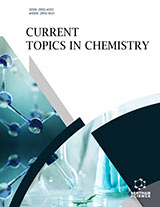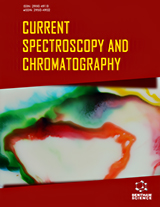Abstract
In this study, we prepared two different type complex groups. One of them is based on Schiff base (A1 , A2 and A3) Cd(II) complexes, another one is β-blockers (acebutolol (ACE), atenolol (ATE) and propranolol (PRO)) Cu(II) complexes. The ligands and their metal complexes were characterized by elemental analyses, mass spectra, 1H(13C) NMR spectra, FT-IR, UV-vis, conductivity measurements and thermal analysis studies. Protonation constants of the ligands and stability constants of their complexes were determined by potentiometric titration method at 25.00±0.02 oC under nitrogen atmosphere and ionic strength of 0.10 M sodium perchlorate. For the Schiff bases, the solvent was 50% DMSO – water; for the β-blockers, it was 50% methanol-water media. The effects of these properties on the observed inhibition of chemiluminescence and the analytical implications of the results are also discussed. Two sets of novel coordination compounds were found to inhibit the intense chemiluminescence reaction in DMSO solution between luminol and dioxygen in the presence of a strong base.
Keywords: Schiff base ligands, Complexes, β-blockers, Stability Constants, Potentiometric studies, Luminol chemiluminescence
Current Analytical Chemistry
Title: Investigations into the Inhibition of Luminol Chemiluminescence by some Novel Metal Complexes
Volume: 6 Issue: 2
Author(s): Aysegul Golcu, R. Alan Wheatley, Havva Demirelli, Mehmet Tumer and Mustafa Dolaz
Affiliation:
Keywords: Schiff base ligands, Complexes, β-blockers, Stability Constants, Potentiometric studies, Luminol chemiluminescence
Abstract: In this study, we prepared two different type complex groups. One of them is based on Schiff base (A1 , A2 and A3) Cd(II) complexes, another one is β-blockers (acebutolol (ACE), atenolol (ATE) and propranolol (PRO)) Cu(II) complexes. The ligands and their metal complexes were characterized by elemental analyses, mass spectra, 1H(13C) NMR spectra, FT-IR, UV-vis, conductivity measurements and thermal analysis studies. Protonation constants of the ligands and stability constants of their complexes were determined by potentiometric titration method at 25.00±0.02 oC under nitrogen atmosphere and ionic strength of 0.10 M sodium perchlorate. For the Schiff bases, the solvent was 50% DMSO – water; for the β-blockers, it was 50% methanol-water media. The effects of these properties on the observed inhibition of chemiluminescence and the analytical implications of the results are also discussed. Two sets of novel coordination compounds were found to inhibit the intense chemiluminescence reaction in DMSO solution between luminol and dioxygen in the presence of a strong base.
Export Options
About this article
Cite this article as:
Golcu Aysegul, Wheatley Alan R., Demirelli Havva, Tumer Mehmet and Dolaz Mustafa, Investigations into the Inhibition of Luminol Chemiluminescence by some Novel Metal Complexes, Current Analytical Chemistry 2010; 6 (2) . https://dx.doi.org/10.2174/157341110790945526
| DOI https://dx.doi.org/10.2174/157341110790945526 |
Print ISSN 1573-4110 |
| Publisher Name Bentham Science Publisher |
Online ISSN 1875-6727 |
 5
5
- Author Guidelines
- Bentham Author Support Services (BASS)
- Graphical Abstracts
- Fabricating and Stating False Information
- Research Misconduct
- Post Publication Discussions and Corrections
- Publishing Ethics and Rectitude
- Increase Visibility of Your Article
- Archiving Policies
- Peer Review Workflow
- Order Your Article Before Print
- Promote Your Article
- Manuscript Transfer Facility
- Editorial Policies
- Allegations from Whistleblowers
- Announcements
Related Articles
-
Epigenetics in Metastatic Breast Cancer: Its Regulation and Implications in Diagnosis, Prognosis and Therapeutics
Current Cancer Drug Targets Hyperglycaemia and Vitamin D: A Systematic Overview
Current Diabetes Reviews Selective Estrogen Receptor Modulators and Aromatase Inhibitors for Breast Cancer Chemoprevention
Current Drug Targets A Viewpoint on Angiotensin-Converting Enzyme 2, Anti-Hypertensives and Coronavirus Disease 2019 (COVID-19)
Infectious Disorders - Drug Targets Epinephrine and its Role in the Development of Obesity and Hypertension
Current Hypertension Reviews Percutaneous Treatment of Hydatid Liver Cyst
Recent Patents on Anti-Infective Drug Discovery Virus Vasculopathy and Stroke: An Under-Recognized Cause and Treatment Target
Infectious Disorders - Drug Targets Red Wine, Arterial Stiffness and Central Hemodynamics
Current Pharmaceutical Design Kidney in Diabetes: from Organ Damage Target to Therapeutic Target
Current Drug Metabolism Editorial from Editor-in-Chief (Hypoxic Pulmonary Hypertension: Are We Getting Closer to the Answer?)
Current Respiratory Medicine Reviews Novel Insights into Vascular Repair Mechanisms
Current Pharmaceutical Design Personalization of Targeted Therapy in Advanced Thyroid Cancer
Current Genomics Gender-Dependent Levels of Hyaluronic Acid in Cerebrospinal Fluid of Patients with Neurodegenerative Dementia
Current Alzheimer Research Gender Differences in Response to Therapy for Cardiovascular Diseases
Current Pharmacogenomics and Personalized Medicine S100A1: Structure, Function, and Therapeutic Potential
Current Chemical Biology Physical Activity and Hypertension: Evidence of Cross-Sectional Studies,Cohort Studies and Meta-Analysis
Current Hypertension Reviews Ethnic and Geographical Differences in Ischaemic Stroke Among Young Adults
Current Vascular Pharmacology Neuropeptides and Gastric Mucosal Homeostasis
Current Topics in Medicinal Chemistry Obesity Therapy: How and Why?
Current Medicinal Chemistry Metabolism-based Drug-drug Interactions in Patients with Chronic Respiratory Diseases: A Review Focusing on Drugs Affecting the Respiratory System
Current Drug Metabolism


























